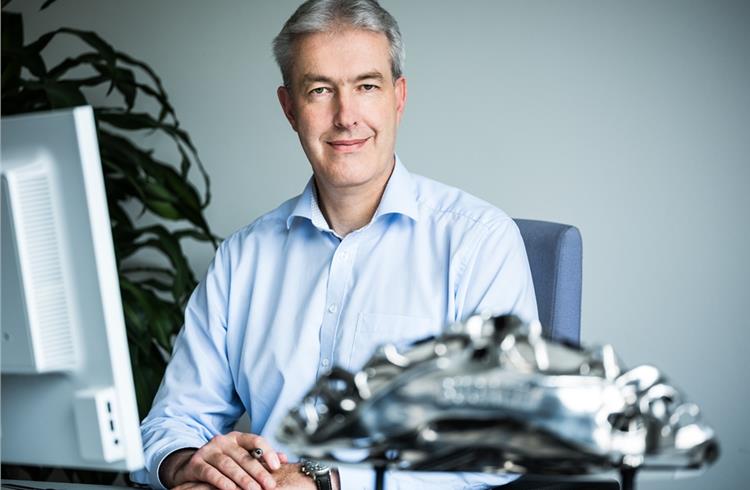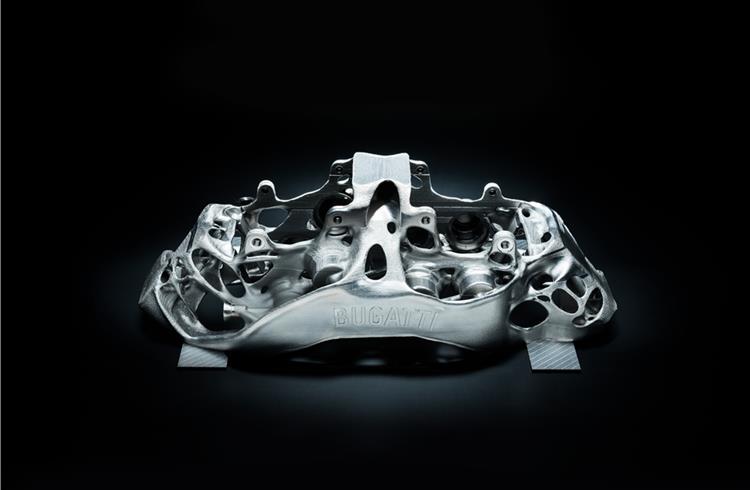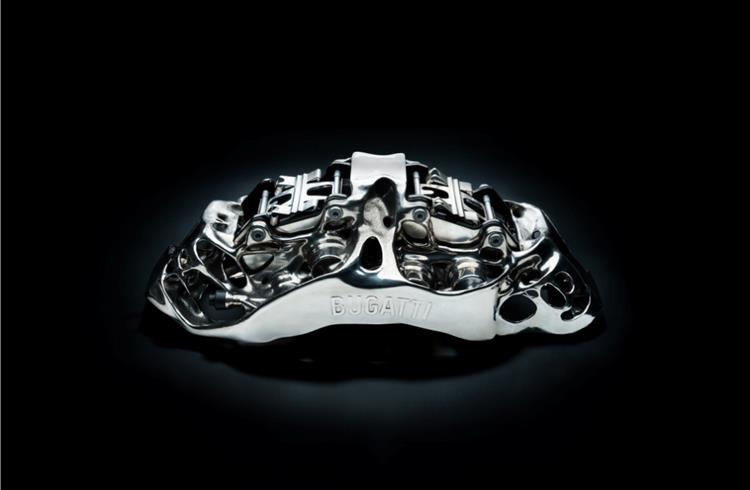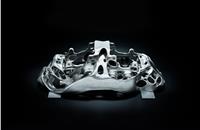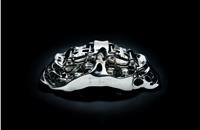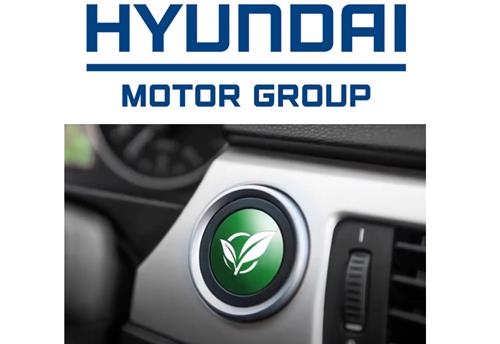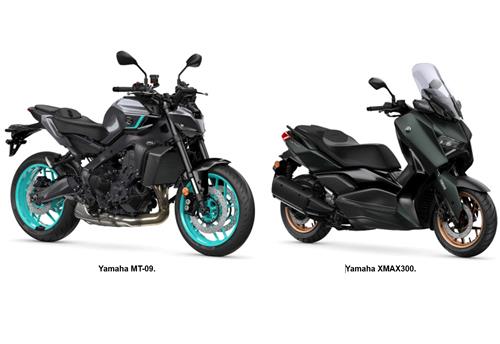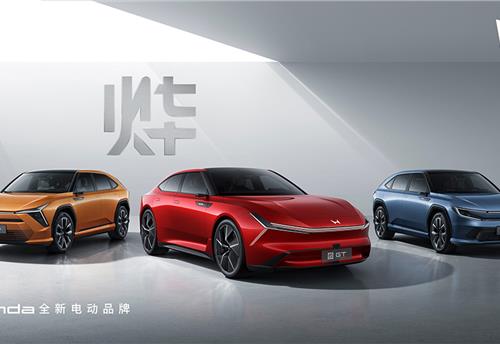Bugatti develops 3D printed titanium brake caliper
The first 3D printed titanium brake caliper is expected to be rolled out in series production in the first half of the year.
French luxury brand Bugatti which is well known for its super sports car, has revealed that its Development Department for the first time have successfully designed a 3D printed brake caliper. It says, while the main material used for the additive production of vehicle components to date has been aluminium, the new brake caliper is made from titanium.
Buggati claims, that this is therefore the world’s largest functional component produced from titanium using 3D printing processes. The record in the development of 3D printing was reached in cooperation with Laser Zentrum Nord of Hamburg, an institute that has formed part of the Fraunhofer research organisation since the beginning of the year.
With this debut, Bugatti underlines its lighthouse function for 3D printing within the Volkswagen Group, and expects to begin vehicle trials for the use of the 3D titanium brake caliper in series production to start in the first half of the year.
“Vehicle development is a never-ending process. This is particularly true at Bugatti,” says Frank Gotzke, head of New Technologies in the Technical Development Department of Bugatti Automobiles. “In our continuing development efforts, we are always considering how new materials and processes can be used to make our current model even better and how future vehicles of our brand could be designed.”

“As our performance data are often at the physical limits, we are especially demanding,” adds Gotzke, who also is a machine tool and production technician and holds a degree in engineering. “This is why Bugatti always goes at least one step further than other manufacturers in the development of technical solutions.”
He has worked for the Volkswagen group for more than 22 years. He joined Bugatti in 2001 and played a key role in the development of the Veyron as Head of Chassis Development and in the development of the Chiron in his current position.
The company claims that it currently uses the most powerful brakes in the world on the new Chiron, and the 3D printed brake calipers was an entirely new development. It is forged from a block of high-strength aluminium alloy, with eight titanium pistons on each of the front calipers and six on each of the rear units, making it the largest brake calipers currently installed on a production vehicle.
The brake calipers of the Chiron are produced using bionic principles on the basis of a natural model, and the new architecture combines minimum weight with maximum stiffness. Buggati says the inspiration for the design and mode of operation of the brakes was taken from motorsports.
The brake developed using the particular titanium alloy, which has the scientific designation of Ti6AI4V, is mainly used in the aerospace industry. The material offers considerably higher performance than aluminium and the new brake caliper, which is 41 cm long, 21 cm wide and 13.6 cm high, weighs only 2.9kg. In comparison with the aluminium component currently used, which weighs 4.9kg, it could therefore reduce the weight of the brake caliper by about 40 percent at the same time as ensuring even higher strength by using the new part.
The company states till date, this approach was not feasible because it is extremely difficult or even impossible to mill or forge components from a titanium block as is normal practice with aluminium due to the extremely high strength of the material. This problem has now been solved using an extremely high-performance 3D printer, which also opens up the possibility of generating even more complex structures which are significantly stiffer and stronger than would be possible with any conventional production process.
“Laser Zentrum Nord is one of many scientific institutes with which we have developed very good cooperation over the years,” Gotzke explains. “Thanks to the large number of projects completed, mainly for the aviation industry, the institute has comprehensive know-how especially in the field of titanium processing and offers mature technology.”
Prof. Dr.-Ing. Claus Emmelmann said, “Cooperation with Bugatti is a key lighthouse project for us.” Emmelmann was formerly managing director of Laser Zentrum Nord and has been Head of the Fraunhofer Institute for Additive Production Technologies (Fraunhofer IAPT) since Laser Zentrum Nord was incorporated in the Fraunhofer research organisation under this name at the beginning of the year. He also heads the Institute of Laser and System Technologies (iLAS) of Hamburg University of Technology.

“We were thrilled to be contacted by Bugatti. I do not know any other carmaker which makes such extreme demands of its products. We were pleased to face up to this challenge,” he added.
The company says the development time for the 3D printed titanium brake caliper was very short, and the concept to the first printed component took about three months. The basic concept, the strength and stiffness simulations and calculations and the design drawings were sent to Laser Zentrum Nord by Bugatti as a complete data package. The institute then carried out process simulation, the design of the supporting structures, actual printing and the treatment of the component. The carmaker took the responsibility for the finishing.
Process
The special 3D printer at Laser Zentrum Nord is the largest printer in the world suitable for titanium and is equipped with four 400-watt lasers. It took a total of 45 hours to print a brake caliper. During this time, titanium powder is deposited layer by layer.
With each layer, the four lasers melt the titanium powder into the shape defined for the brake caliper, the material cools immediately and the brake caliper take shape. The total number of layers required is 2,213 and following the completion of the final layer, the remaining titanium powder which had not melted is removed from the chamber, cleaned and preserved for reuse in a closed loop. What remains in the chamber is a brake caliper complete with supporting structure which maintains its shape until it has received stabilising heat treatment and reached its final strength.
Heat treatment is carried out in a furnace where the brake caliper is exposed to an initial temperature of 700 degree Celsius and falls to 100 degree Celsius in the course of the process, in order to eliminate residual stress and to ensure dimensional stability.
Finally, the supporting structures are removed and the component is separated from the tray. In the next production stage, the surface is smoothed in a combined mechanical, physical and chemical process which drastically improves its fatigue strength – the long-term durability of the component in later vehicle operation. Finally, the contours of functional surfaces, such as the piston contact surfaces or threads, are machined in a five-axis milling machine which takes another 11 hours to complete its work.
The result is a delicately shaped component with wall thicknesses between a minimum of only one millimetre and a maximum of four millimetres.
“It was a very moving moment for the team when we held our first titanium brake caliper from the 3D printer in our hands,” Frank Gotzke states. “In terms of volume, this is the largest functional component produced from titanium by additive manufacturing methods. Everyone who looks at the part is surprised at how light it is – despite its large size. Technically, this is an extremely impressive brake caliper, and it also looks great.”
The first trials for use in production vehicles are due to be held in the first half of the year; the time schedule is still to be finalised. At that stage, the engineer promises that it will be possible to considerably shorten production times, especially for machining.
RELATED ARTICLES
Hyundai and carbon fibre specialist Toray to develop lightweight, high-strength materials
Partnership aims to secure capabilities to develop lightweight and high-strength materials for environmentally friendly ...
Yamaha wins Red Dot product design awards for MT-09 and XMAX 300
The latest awards mark the 13th year in a row – every year since 2012 – that a Yamaha Motor product has received a Red D...
Honda reveals new Ye series of EVs for China
A second set of Ye EVs will be revealed in the coming months, completing the six-car line-up for China.





 By Autocar Pro News Desk
By Autocar Pro News Desk
 24 Jan 2018
24 Jan 2018
 4422 Views
4422 Views



